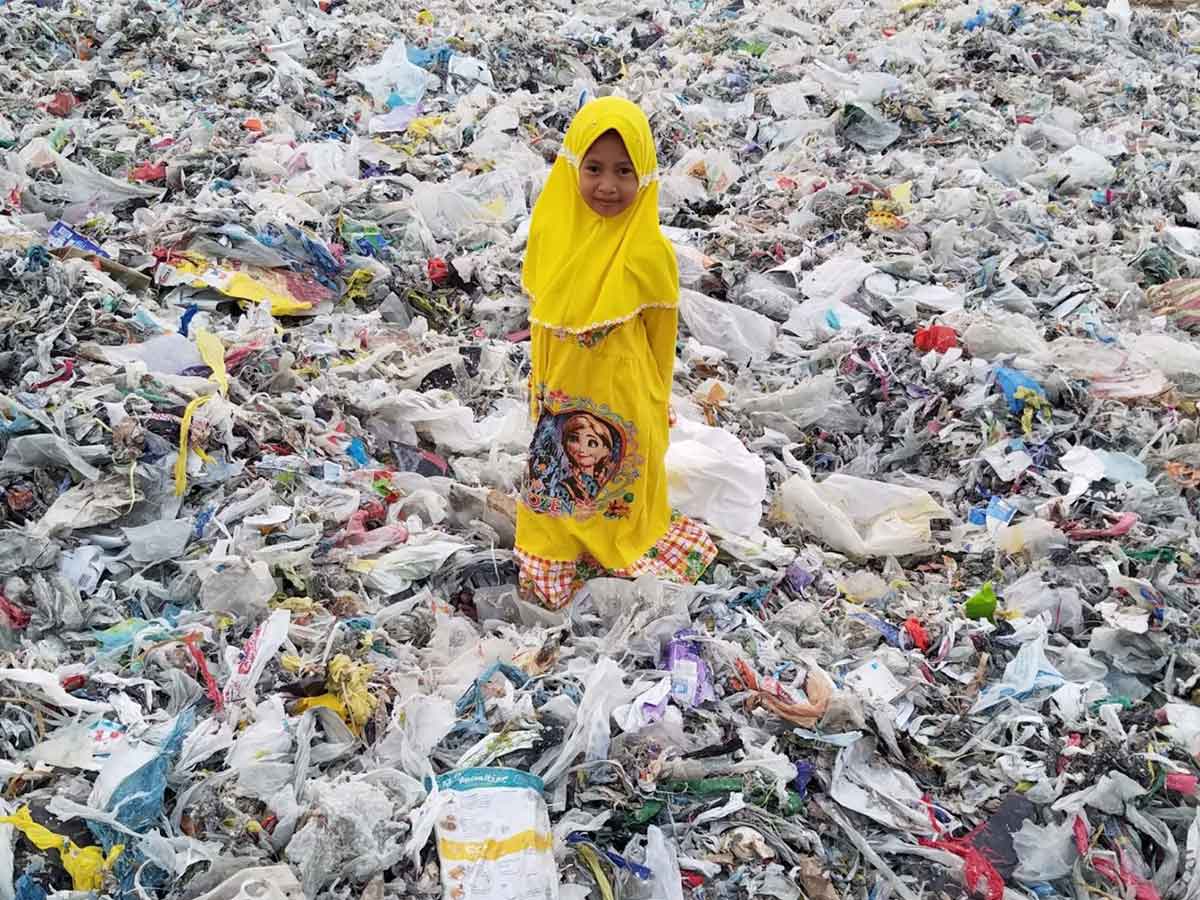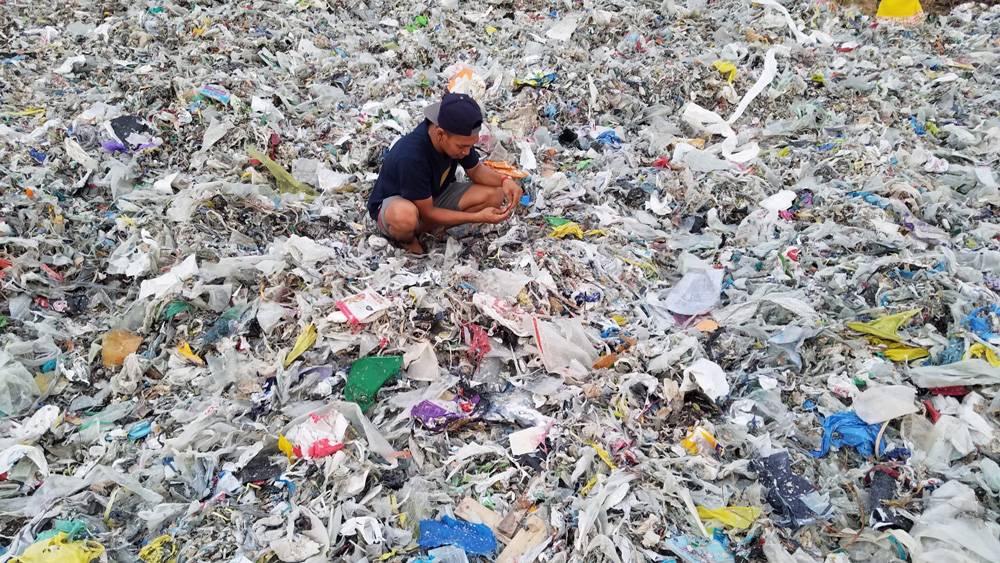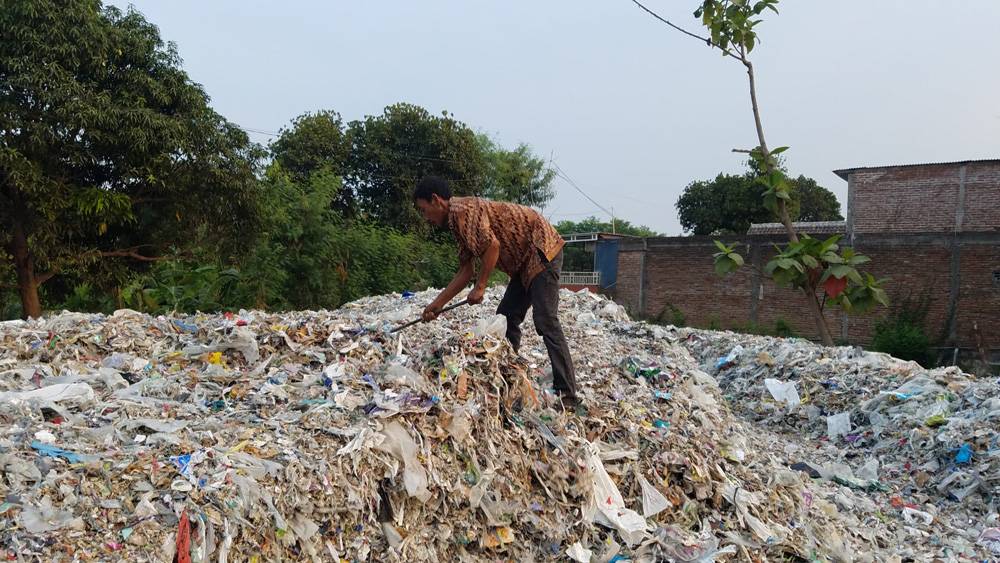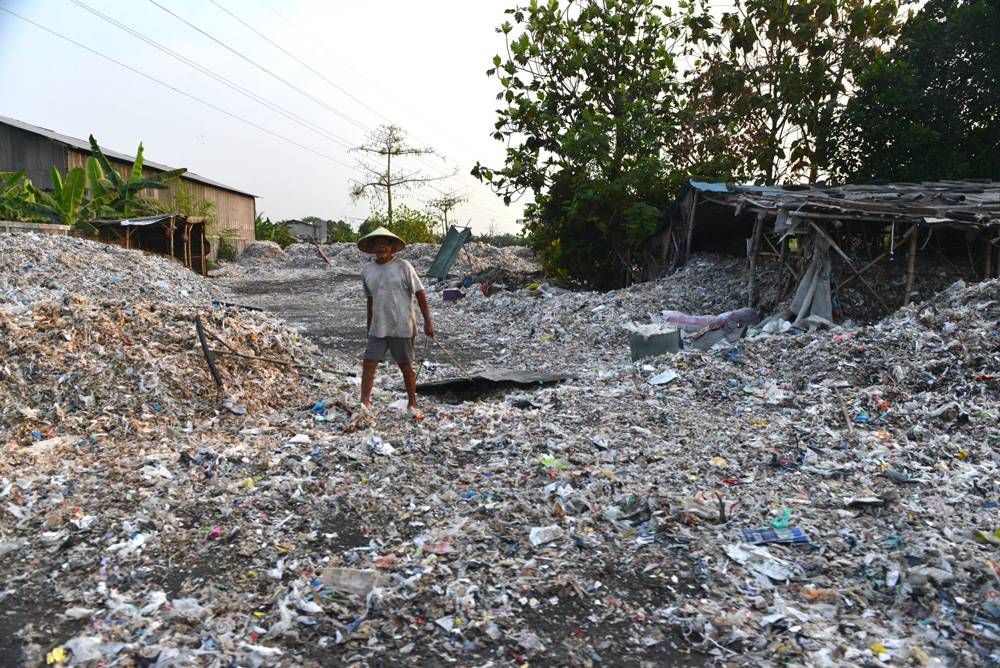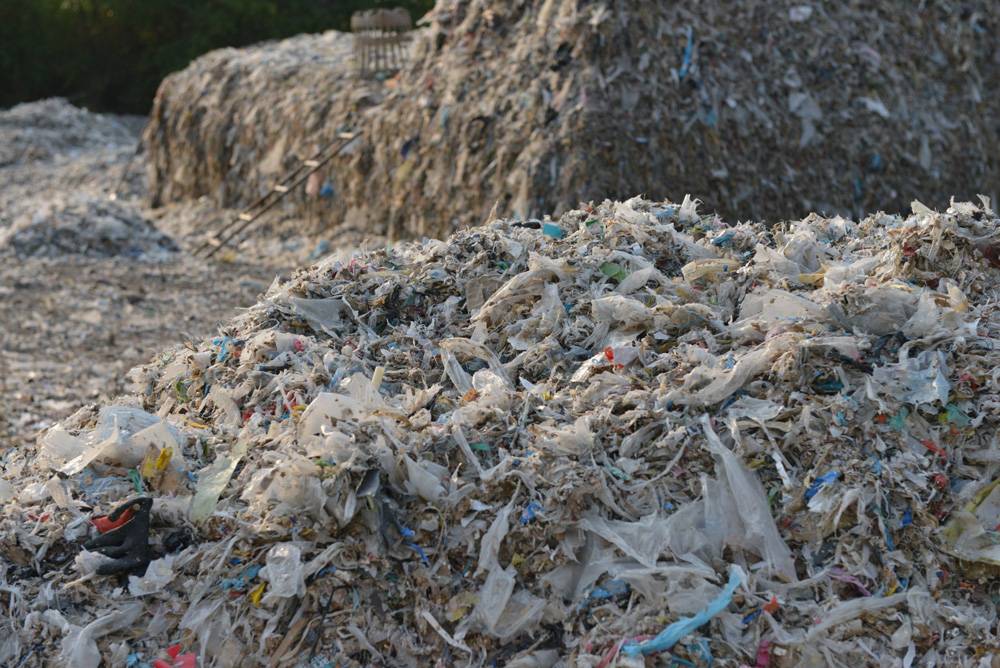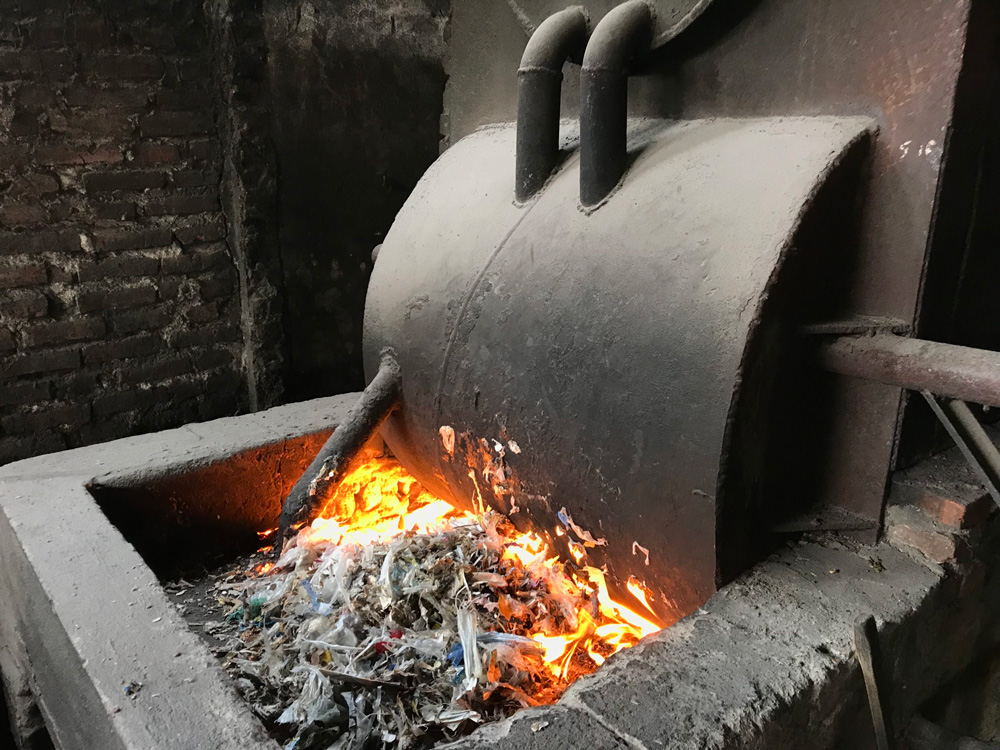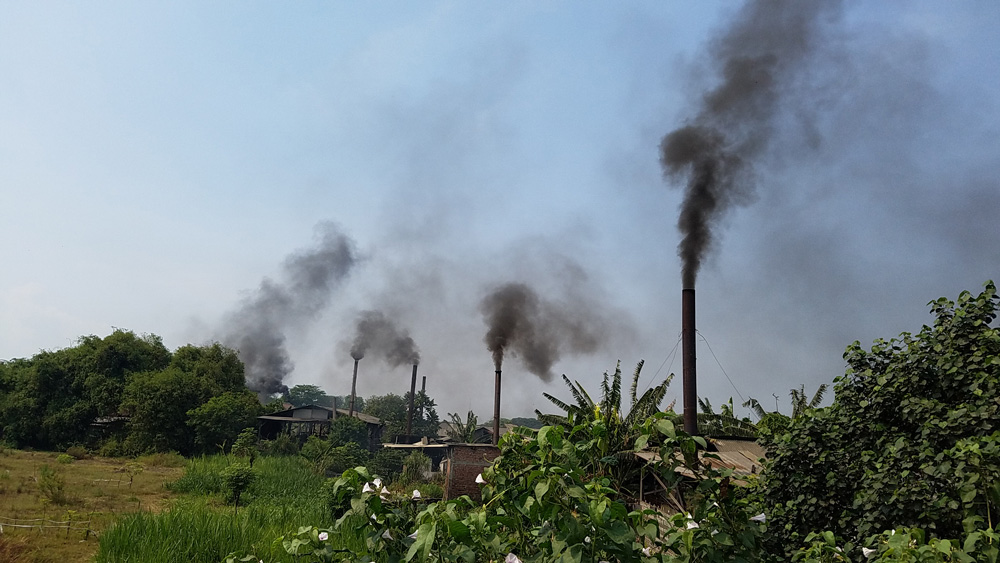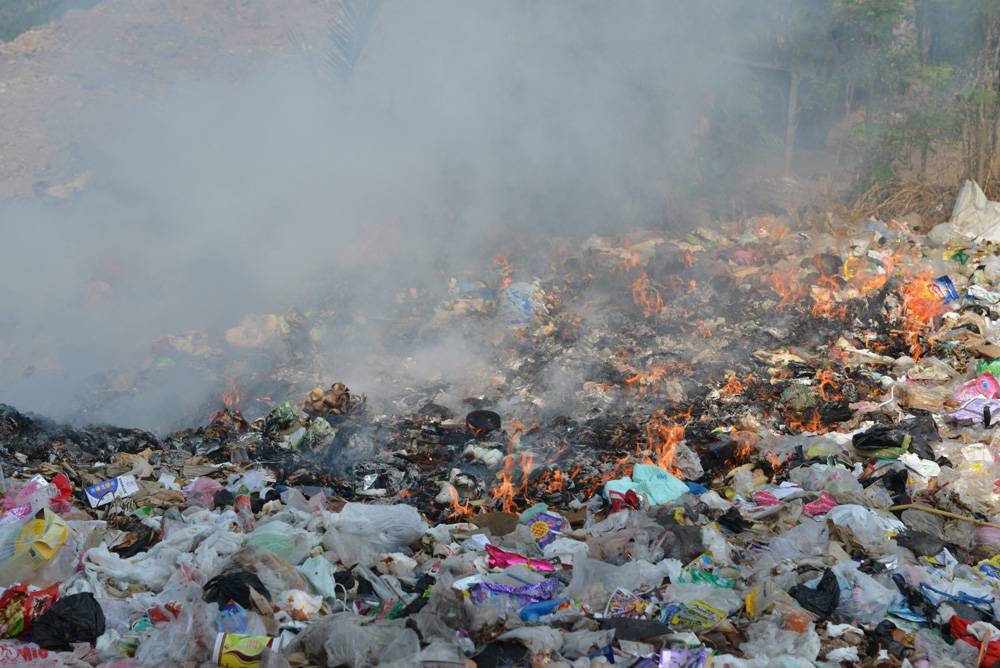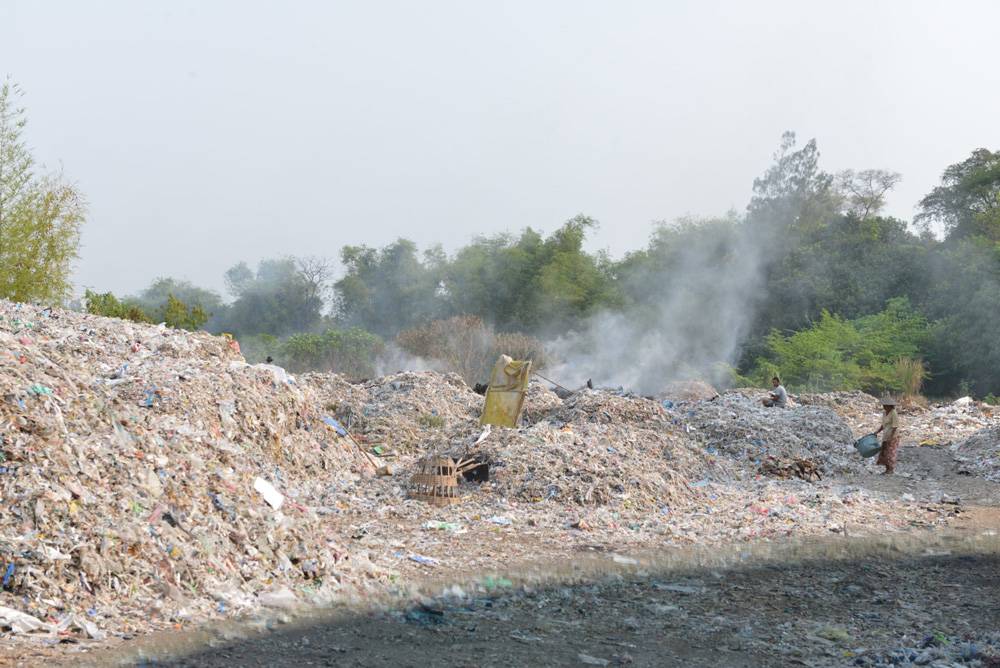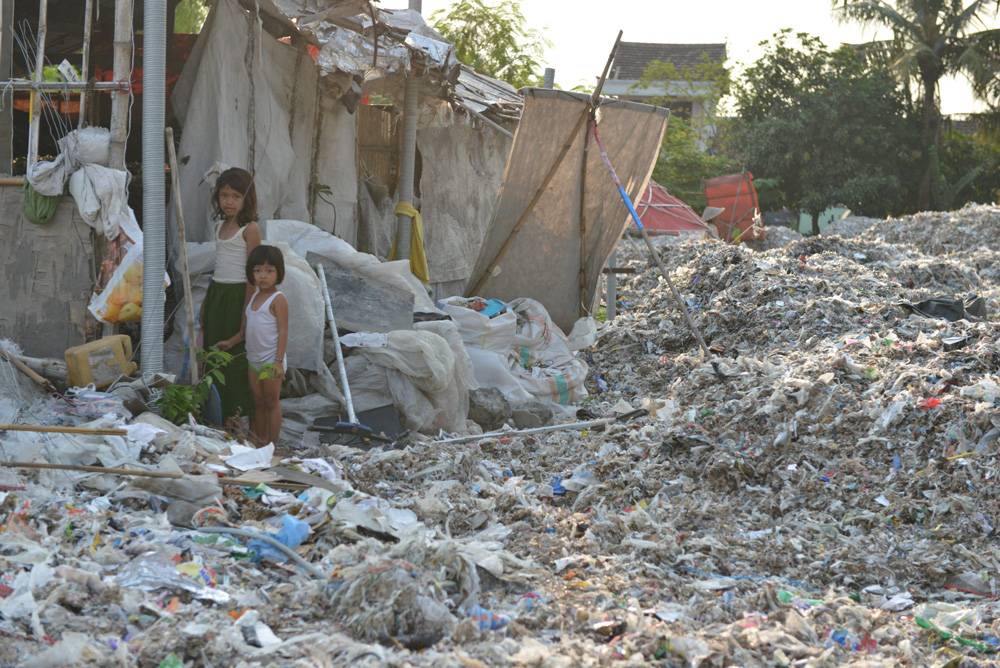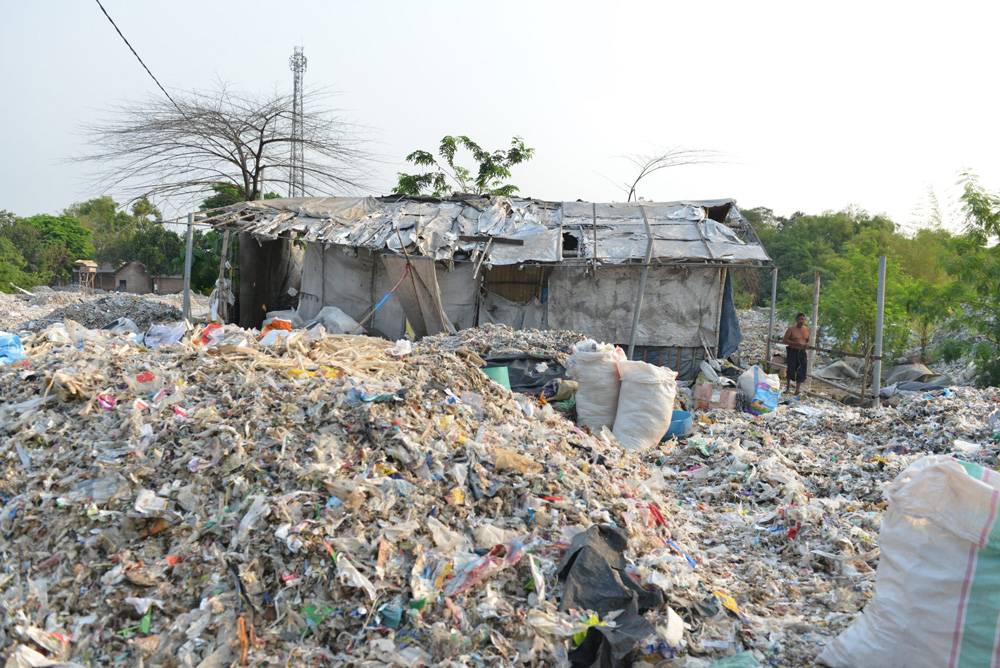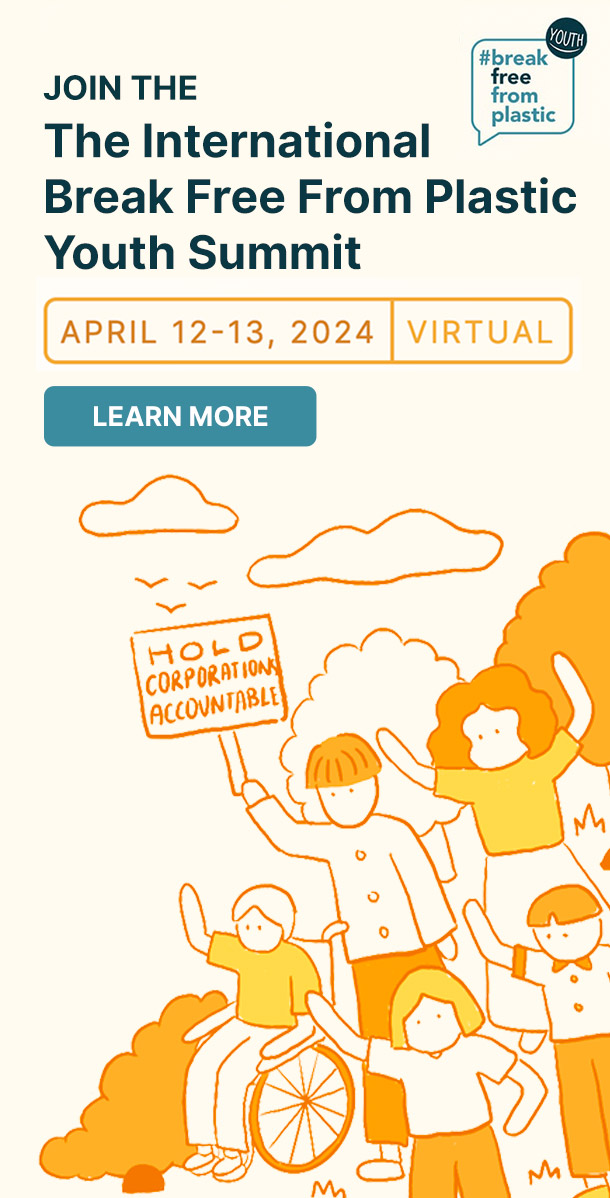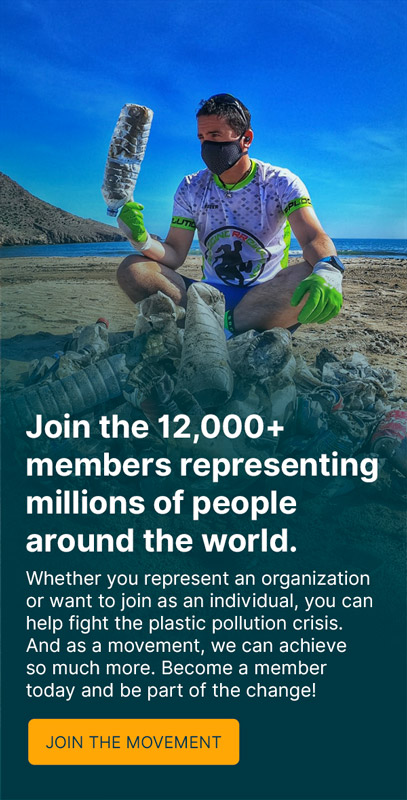One of the most common misconceptions about plastic is its recycling value, but the story there is nuanced. Recycled plastics don’t have much value, especially given our rising levels of virgin plastic production. What’s more, not all plastic is created alike, and plastics with little or no recycling value are likely to end up poisoning people and the environment. For the most part, countries in the developed world pass off this burden to developing nations. We simply can’t recycle our way out of this problem.
We wanted to see where low value plastic recycled in the US and other developed countries ends up. That curiosity took us to Indonesia, and what we found was startling.
We throw all sorts of plastic into our recycling bins, which then gets sorted at big, automated recycling facilities. In this process, flat plastic often gets mistaken for paper and ends up in huge bales of recycled paper. These bales as loaded into shipping containers and exported to countries with fewer environmental controls and cheap labor to be recycled into new paper and cardboard products. At the paper plants in countries like Indonesia, the flat plastic “contaminants” are sorted out by hand.
The problem is that the onslaught of these exports is near constant, so all that plastic ends up being dumped in open fields and neighborhoods where an informal sector of wastepickers sort through it for materials that can earn them money from the recycling operators in country. They make about $1.50 a day sorting through these mountains of plastic waste for recyclables like flattened aluminum cans and beverage bottles. And because the trucks of plastic never stop, they continue to look only for the highest-value materials. The rest of the plastic – ”residuals” like snack wrappers, bags, and other scraps – could technically be recycled (for the most part), it has so little value that it’s not worth it even for someone making just $1.50 a day to pick it up.
Places like this, in Surabaya, Indonesia, are the end of the line for plastic from all over the world. To get rid of the onslaught of plastic that keeps coming from places like the US, The European Union, and Australia, it’s openly burned or used as fuel in local neighborhood tofu factories. The ash is full of toxics and is dumped without any control, often adjacent to rivers and rice fields. The unfiltered smoke from hundreds of stacks goes straight into the air.
In other neighborhoods in this area, the residual plastic separated from the paper is dumped in communities willing to sort it for a few extra dollars to augment rice farming and other small-scale industries. The result is a surreal landscape of litter, with hills of waste and the occasional tree sticking through a floor of plastic so thick you can’t see the ground. Here, too, the plastic is burned to make room for more, sending dioxins and heavy metals straight into the soil and water table. The smell of burning plastic is omnipresent, and induces headaches and sore throats within minutes of stepping out of car. There is little public health data in places like rural Indonesia, but I can say anecdotally there’s something in plain view that’s hard to stomach: there are few old people. People in these communities don’t seem to live long lives. They are choking on plastic and its poisonous fumes.
It’s easy to look at this sort of practice out of context and blame a country like Indonesia for ‘bad management.’ But what’s missing from the dialogue is that the current global system of plastic consumption and disposal depends on this reality. If poor people in other countries weren’t sorting out the few valuable materials and burning the rest of our Trader Joe’s packaging and water bottle wrappers, the recycling systems in developed world countries would economically collapse.
It’s easy to look at this sort of practice out of context and blame a country like Indonesia for ‘bad management.’ But what’s missing from the dialogue is that the current global system of plastic consumption and disposal depends on this reality. If poor people in other countries weren’t sorting out the few valuable materials and burning the rest of our Trader Joe’s packaging and water bottle wrappers, the recycling systems in developed world countries would economically collapse.
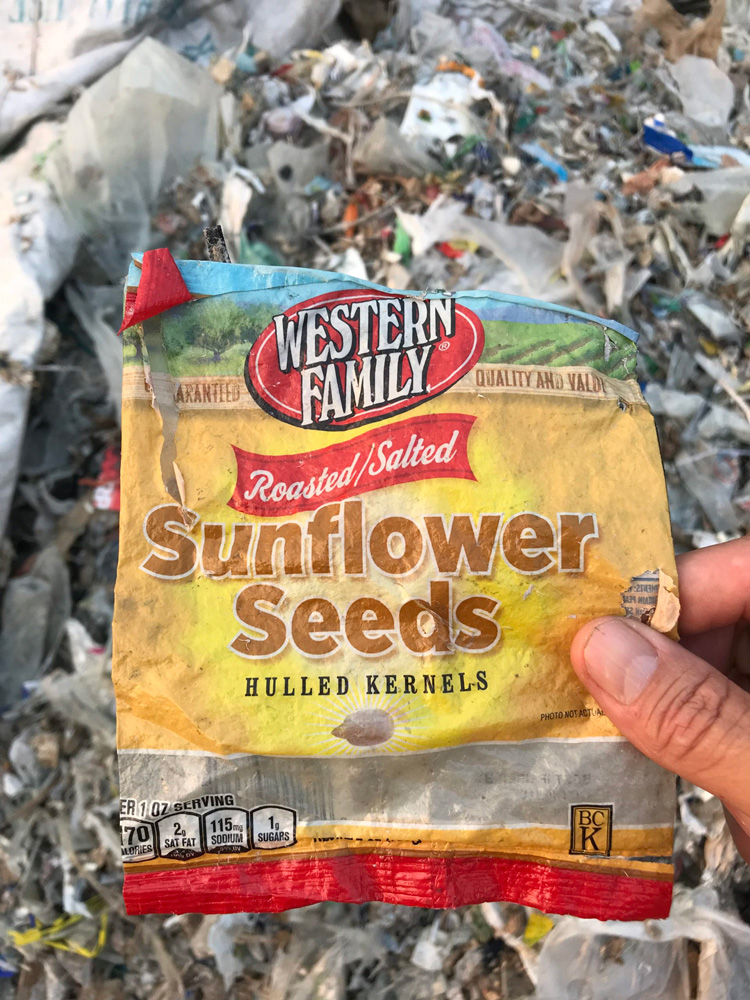
This environmental horror is one of the main reasons China announced that it would no longer take our waste. That alone has drastically affected the economics of recycling globally, but also created a race to the bottom where developed world countries are desperately trying to find new places to dispose of our waste. In a sense, this system is designed this way, not necessarily by any one evil specter, but more from a series of bad ideas that have become an entrenched system that is hard to change.
Luckily, in all the places where these problems exist, there are people fighting back, working to change the system. They’re working to stop waste imports and ban low- and no-value plastics from their communities. But we in privileged societies also have an obligation to work in solidarity with people in developing countries and to push back at the convenience industrial complex that created this mess in the first place. That means organizing against corporations like Nestlé, Procter & Gamble, and Unilever who profit from this model. It means passing strong policies aimed at reducing the amount of plastic in the system and making companies responsible for the waste that their products leave behind.
The Story of Plastic will show not only what this hidden global system looks like, but also how a global movement is rising up to fix it. It not only can be done, it must be done.
Article originally posted in Story of Stuff.

